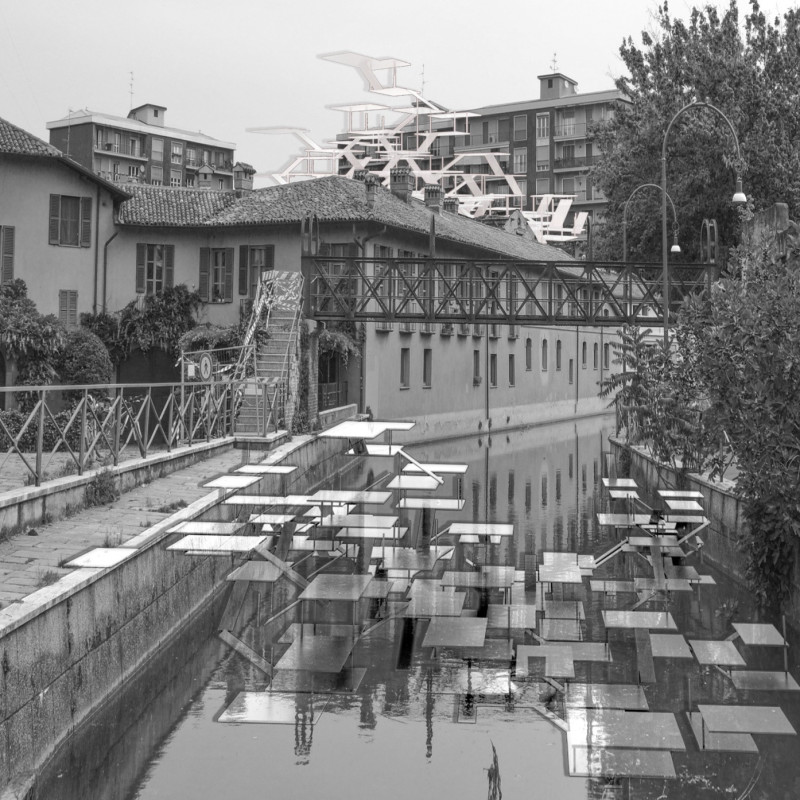5 key facts about this project
The "Aqueducts of Babylon" project revitalizes the Navigli district in Milan, focusing on the enhancement of its canal system. This architectural design brings water management and urban connectivity to the forefront, creating an integrated ecosystem within an urban environment. The project seeks to balance functionality with ecological sustainability, ensuring that waterways serve multiple purposes while fostering community engagement.
Unique Habitat and Design Integration
The concept of the "Aqueducts of Babylon" draws inspiration from historical water management systems. It features waterwheel models, strategically placed to facilitate water transport and add visual interest. Elevated segments of the canal are designed to enhance accessibility and engage the public. This adaptability allows for new activities along the waterways, while providing environmental benefits through integrated green spaces that support both aquatic and terrestrial life.
The project utilizes an innovative approach by employing algorithms to optimize spatial layouts. The Gravity Point Connection method links significant urban destinations, facilitating pedestrian movement and creating a network of pathways. In contrast, the Repulsion Point Interference method minimizes disruption to existing urban activity. This dual approach establishes a harmonious balance between nature and urban infrastructure.
Pragmatic Material Selection
The design incorporates a range of materials that contribute to both structural integrity and aesthetic appeal. Concrete forms the foundation of canal systems, providing durability against environmental stress. Steel structures add stability and support for elevated sections, while glass elements enhance visibility and facilitate light penetration. Wood is also employed in certain features, offering warmth and a natural touch within the urban context. Additionally, permeable pavers are utilized for walkways, promoting effective water management and reducing urban runoff.
The inclusion of an ecological linear park further distinguishes this project. This park functions as a habitat for local fauna and flora, providing educational opportunities for residents. It serves as both a recreational area and a natural buffer, enhancing biodiversity in an urban setting while fostering community interaction with natural elements.
The "Aqueducts of Babylon" project presents a meticulous approach to urban revitalization. With its emphasis on ecological integration, innovative design methodologies, and careful material selection, it sets a standard for modern architectural practices. Readers are encouraged to explore the architectural plans, sections, and designs to gain a deeper understanding of the project’s scope and its impact on urban architectures.






















































